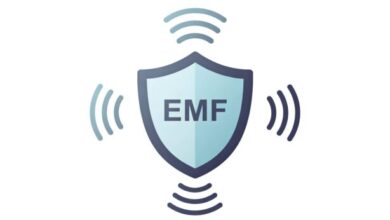
Introduction to Secure Cloud Connectivity
In the digital age, secure cloud connectivity is no longer optional but necessary. The growing dependence on cloud-based solutions is mainly responsible for this change towards driving business innovation and efficiency. As organizations transition to cloud environments, ensuring robust security measures becomes paramount. Deploying SSE solutions is a strategic step in integrating various security services to protect sensitive data and enable seamless access to cloud resources. Businesses can reduce risks and improve operational efficiency by optimizing cloud access with advanced security measures, creating a competitive advantage in a fast-changing market.
The Rise of Cloud Computing
Cloud computing has expanded significantly in the last decade, revolutionizing how organizations handle their IT infrastructure. Its ability to adapt and increase has made it an appealing choice for businesses of every size. Experts in the industry believe the global cloud computing market was worth USD 371.5 billion in 2020 and is expected to experience significant growth. This skyrocketing adoption reflects cloud services’ undeniable impact on enhancing business agility and resource management. However, with this growth comes the pressing need for elevated security measures. As organizations expand their cloud footprints, they face heightened vulnerabilities that necessitate sophisticated cybersecurity strategies to maintain data integrity and confidentiality.
Understanding Security Service Edge (SSE)
Security Service Edge (SSE) is an emerging architecture that addresses the unique security challenges of modern cloud environments. SSE creates a cohesive solution that operates at the network edge by combining a suite of cloud-delivered security services. This integration includes network protection, threat prevention, and data security services, all seamlessly working together to fortify an organization’s security posture. The essence of SSE lies in its ability to provide comprehensive security management while ensuring that legitimate users have unhindered access to resources across the cloud. As businesses increasingly adopt hybrid and multi-cloud strategies, the role of SSE becomes even more crucial, offering a unifying thread that ties together disparate security practices under one umbrella.
Critical Benefits of SSE Implementation
Implementing SSE offers several strategic advantages to organizations seeking to bolster cloud security. First, it simplifies security management by combining various protective measures into a single, streamlined framework. This consolidation reduces operational complexity and allows for faster response times to emerging threats. Moreover, SSE uses advanced threat intelligence to detect and address risks proactively before they negatively affect business activities. The increased security can result in better adherence to regulations and decreased risk of data breaches. Businesses can discover the advantages of cloud security in this resource, thoroughly analyzing how SSE can enhance a company’s security position.
Real-world Applications of SSE
SSE solutions are being leveraged across various sectors, each benefiting uniquely from their comprehensive security capabilities. SSE is pivotal in ensuring secure transactions and protecting sensitive customer data from sophisticated cyber threats in the financial industry. Likewise, healthcare providers harness SSE to comply with rigid regulatory standards like HIPAA while safeguarding patient information from unauthorized access. These practical examples demonstrate how SSE can improve security protocols and ensure adherence to regulations, allowing organizations to prioritize their main objectives without security issues.
Challenges and Considerations in SSE Deployment
While the advantages of deploying SSE are clear, the journey toward implementation is fraught with challenges. Organizations often need help with issues related to the complexity of integrating SSE into existing infrastructures, alongside concerns about budget allocations and the availability of skilled personnel to manage these systems. Moreover, aligning SSE deployment with existing business operations requires meticulous planning and engagement with key stakeholders. To navigate these challenges, businesses must assess their security landscape and develop comprehensive deployment strategies considering immediate and long-term objectives.
Industry Trends and Future of SSE
As cyber threats evolve, the landscape of SSE is changing significantly. A significant development is the growing integration of artificial intelligence (AI) and machine learning (ML) into SSE systems, improving their agility and flexibility. These technologies allow for automated threat detection and response, offering a robust layer of protection against ever-evolving cyber adversaries. The future trends in cloud security report highlight how these innovations set the stage for a more resilient and intelligent approach to cloud security, providing insights that can help enterprises stay ahead of potential threats.
Practical Steps for Implementing SSE
For organizations contemplating a Secure Service Edge (SSE) deployment, achieving a successful implementation requires a thoughtful, multi-step approach that begins with thoroughly assessing the existing security infrastructure to pinpoint vulnerabilities and areas needing improvement. Engaging key IT and business operations stakeholders is crucial to foster alignment and secure buy-in for the SSE objectives, ensuring that the deployment meets the organization’s diverse needs. Developing a detailed, step-by-step implementation plan minimizes risks and facilitates a smooth transition to the new system, enabling teams to adapt effectively. By implementing best practices and effectively overseeing every step of the deployment process, businesses can significantly enhance their cloud security stance and prepare for the changing demands of the digital environment.



